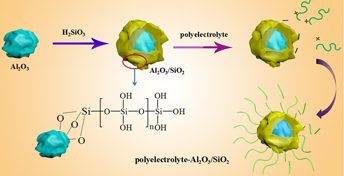Crossref Citations
This article has been cited by the following publications. This list is generated based on data provided by
Crossref.
Bahçe, Erkan
Demirel, Maruf H.
Köytepe, Süleyman
and
Seçkin, Turgay
2020.
Production of abrasive apricot kernel shell powder/boron nitride/polyester composites for cleaning of paint and corrosion on metal surfaces.
Polymer Composites,
Vol. 41,
Issue. 2,
p.
544.
Pan, Jisheng
Chen, Zhijun
and
Yan, Qiusheng
2020.
Study on the rheological properties and polishing properties of SiO2@CI composite particle for sapphire wafer.
Smart Materials and Structures,
Vol. 29,
Issue. 11,
p.
114003.
Nadimi Bavil Oliaei, Samad
Mukhtarkhanov, Muslim
and
Perveen, Asma
2020.
Advances in Abrasive Based Machining and Finishing Processes.
p.
235.
Yu, Haiyang
Tang, Xiaoxue
Kong, Xue
Li, Xing’ai
Li, Yanpei
Xi, Mengfei
Chang, Tongtong
Meng, Danni
Yang, Senlin
Guo, Wanying
Zhang, Yanfeng
Zhang, Zefang
and
Rao, Pinhua
2021.
Electrostatic Self-Assembled Composite Abrasives for Chemical Mechanical Polishing of A-Plane Sapphire.
ECS Journal of Solid State Science and Technology,
Vol. 10,
Issue. 11,
p.
114002.
Zhou, Chen
Xu, Xiangyang
Dai, Lei
Gong, Haiming
and
Lin, Shuntian
2021.
Chemical-mechanical polishing performance of core-shell structured polystyrene@ceria/nanodiamond ternary abrasives on sapphire wafer.
Ceramics International,
Vol. 47,
Issue. 22,
p.
31691.
Ogugua, Simon N.
Ntwaeaborwa, Odireleng M.
and
Swart, Hendrik C.
2021.
Luminescence, structure and insight on the inversion degree from normal to inverse spinel in a ZnAl(2−)Fe3+O4 system.
Boletín de la Sociedad Española de Cerámica y Vidrio,
Vol. 60,
Issue. 3,
p.
147.
Zhang, Zhenyu
Liu, Jie
Hu, Wei
Zhang, Lezhen
Xie, Wenxiang
and
Liao, Longxing
2021.
Chemical mechanical polishing for sapphire wafers using a developed slurry.
Journal of Manufacturing Processes,
Vol. 62,
Issue. ,
p.
762.
Liu, Zhixiang
and
Tang, Yunqing
2021.
An approach for hydrophobic fixed abrasive pad based on layer-by-layer method.
Microelectronic Engineering,
Vol. 238,
Issue. ,
p.
111505.
Liu, Lu
Zhang, Zhenyu
Wu, Bin
Hu, Wei
Meng, Fanning
and
Li, Yubiao
2021.
A review: green chemical mechanical polishing for metals and brittle wafers.
Journal of Physics D: Applied Physics,
Vol. 54,
Issue. 37,
p.
373001.
Zhou, Mufang
Zhong, Min
and
Xu, Wenhu
2022.
Effects of ultrasonic amplitude on sapphire ultrasonic vibration assisted chemical mechanical polishing by experimental and CFD method.
Mechanics of Advanced Materials and Structures,
Vol. 29,
Issue. 28,
p.
7086.
Xu, Yongchao
Lin, Chen
Wang, Qianting
Zheng, Charlesming
Zhan, Youji
and
Chen, Bingsan
2022.
A novel polishing process with rigid-flexible composite structure plate for sapphire wafer polishing.
The International Journal of Advanced Manufacturing Technology,
Vol. 122,
Issue. 2,
p.
659.
Zhou, Mufang
Cheng, Yuanyao
Zhong, Min
and
Xu, Wenhu
2023.
Macro and micro-nano machining mechanism for ultrasonic vibration assisted chemical mechanical polishing of sapphire.
Applied Surface Science,
Vol. 640,
Issue. ,
p.
158343.
Zhou, Mufang
Zhong, Min
and
Xu, Wenhu
2023.
Novel model of material removal rate on ultrasonic-assisted chemical mechanical polishing for sapphire.
Friction,
Vol. 11,
Issue. 11,
p.
2073.
Li, Shaoping
Fu, Jieni
He, Zhaobo
Luo, Yue
and
Wu, Shuilin
2023.
Nanomaterials and Equipment for Chemical–Mechanical Polishing of Single-Crystal Sapphire Wafers.
Coatings,
Vol. 13,
Issue. 12,
p.
2081.
Do, Tan-Tai
and
Fang, Te-Hua
2023.
Deep insights into interaction behaviour and material removal of β-SiC wafer in nanoscale polishing.
Tribology International,
Vol. 186,
Issue. ,
p.
108639.
Luo, Ziyuan
Lu, Jiabin
Yan, Qiusheng
Hu, Da
and
Zhou, Yongze
2024.
Influence of SiO2–ZnO mixed soft abrasive on tribological behavior and polishing performance of sapphire wafer.
Materials Science in Semiconductor Processing,
Vol. 176,
Issue. ,
p.
108318.





